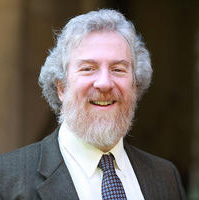Jerusalem

As we emerge from our encounter with destruction and desolation on Tish’ah Be’Av, we approach Shabbat Nahamu, named for the opening words of the haftarah “Nahamu nahamu ami” (Be comforted, oh be comforted My people; Isa. 40:1). This becomes the week when we allow ourselves to encounter all the images of Jerusalem that are presented to us as signs and symbols of hope in our liturgy.
Each day of the week, the 14th blessing of the ‘Amidah implores, “Return in mercy to Jerusalem, Your city” (Siddur Sim Shalom for Weekdays, 40). In the context of the ‘Amidah, both this blessing and the next speak of the far future at the “end of days”—eschatological times. While this may be the case, based upon the metaphor of Zechariah 8:3, there are many who see the present reality of a renewed and rebuilt Jerusalem as a sign that we have moved forward from the destruction of Tish’ah Be’Av. In birkat hamazon (blessing after meals), the third blessing is perhaps a little less “messianic,” focusing upon God as “bonei Yerushaliyim” (God Who builds Jerusalem; Siddur Sim Shalom for Weekdays, 233). The present tense of the verb reflects an active and ongoing process of building.
Looking back at the lessons drawn by our Sages, who identified contentiousness among the Jewish People as one of the factors leading to the destruction of Tish’ah Be’Av, perhaps we might learn ways in which we can build unity and universal love among the Jewish People that will eventually result in the renewed fabric of Jerusalem—significant steps in harmony with the values of ultimate Redemption. Perhaps the current efforts to find a way in which all the Jewish People can pray in their own way at the Kotel is a “test case” presented for solution to us, the Jewish People. Many, including our children, are watching; perhaps we are also being watched, and judged, by the One from Whom nothing is hidden.
May we each find our way to become partners in the true, but gritty, difficult, and even political work of building a Jerusalem that reflects God’s love for all humanity, recalling God’s vision that “My house will be called a beyt tefillah [a House of Prayer] for all people” (Isa. 56:7).
Rabbi Shlomo Carlebach composed many songs reflecting love of and yearning for Jerusalem. Here is a setting of Uv’nei Yerushalayim.
As always, I am interested in hearing comments and reflections on these thoughts about prayer and liturgy. You may reach me at sabarth@jtsa.edu.



